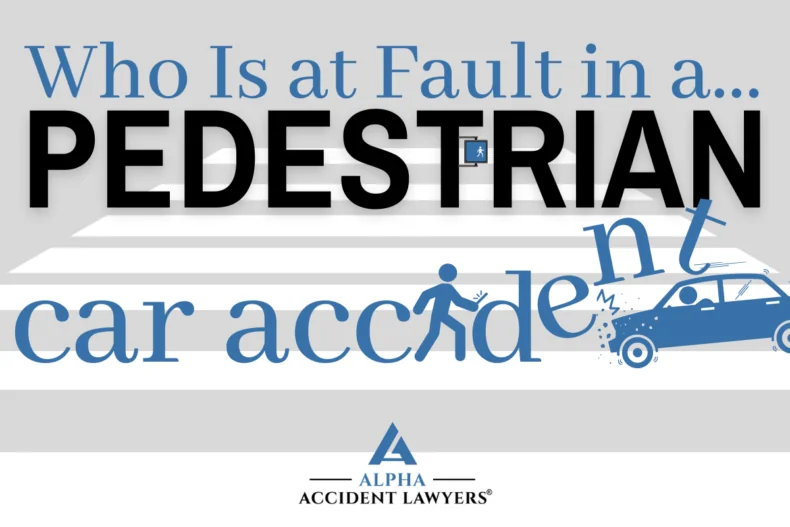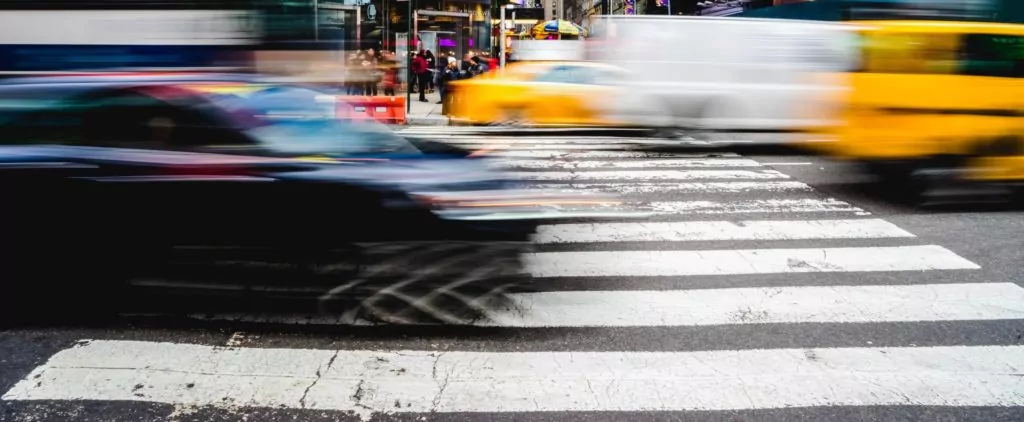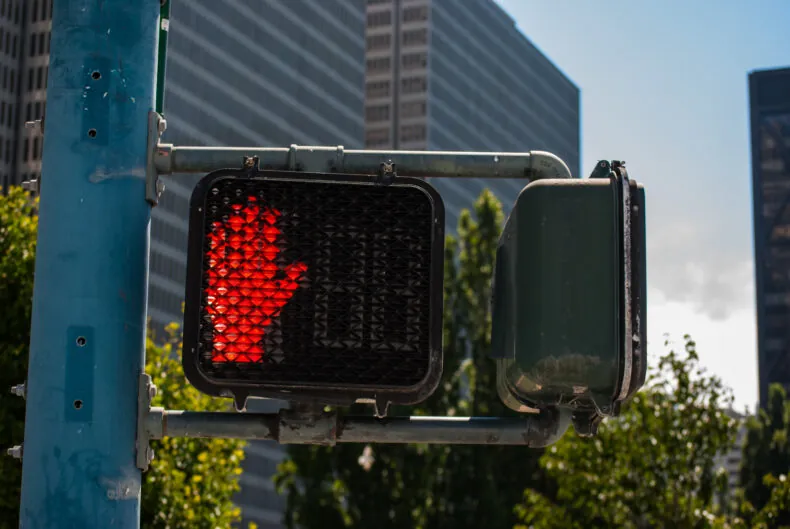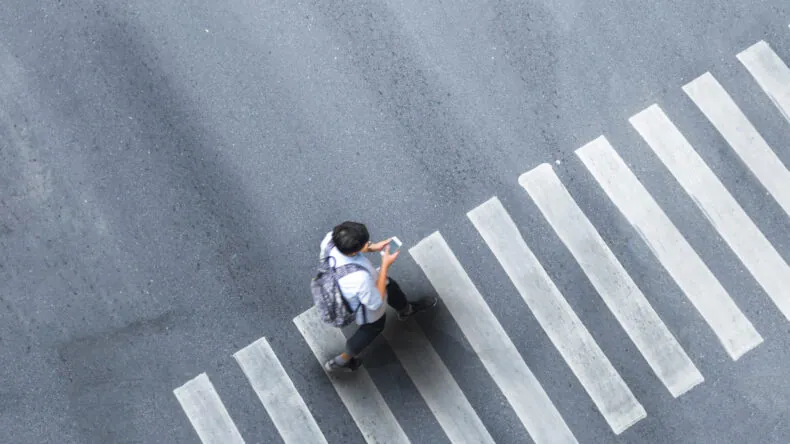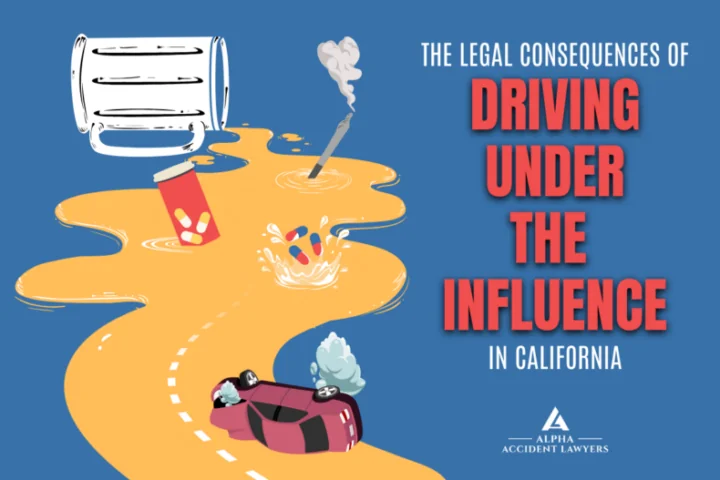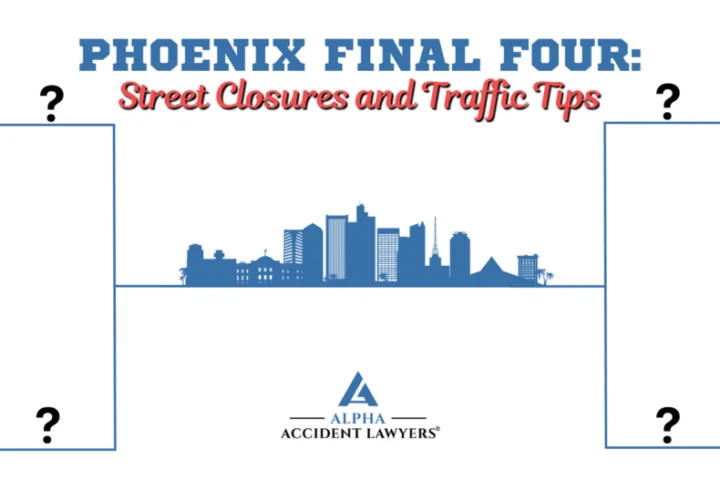Who Is at Fault in a Pedestrian-Car Accident?
A car versus pedestrian accident can be deadly. Each year, about 20 people are killed each day in car-pedestrian accidents across the US. According to the Governors Highway Safety Association, there were more pedestrian deaths in 2021 than in any other single year, in the past 40 years. There were 7,485 pedestrian deaths that year.
Were you injured in a pedestrian accident? You may have a lot of questions such as, “Who will pay for my medical bills”? Pedestrian accidents aren’t always clear-cut when it comes to liability. To help you sort through the aftermath of a car-pedestrian accident and take the next steps, here’s a guide that addresses liability in car accidents involving pedestrians.
Exercising Reasonable Care
Both pedestrians and motorists have a “duty of care” to uphold. This means that individuals have a legal responsibility to exercise reasonable care and avoid acting in a manner that can cause harm to others.
Therefore, both motorists and pedestrians have a legal duty to avoid negligent behavior in order to protect themselves and those around them. Additionally, if both parties are found negligent, both the driver and pedestrian may be held liable in a personal injury lawsuit.
Duty of Care for Motorists
- The driver’s duty of care requires that the motorist obey traffic laws, traffic control signals, and signs.
- Motor vehicle drivers should be aware of their surroundings and check for pedestrians. They should also be vigilant and anticipate pedestrians in school zones and residential areas.
- Automobile drivers should yield the right-of-way to pedestrians walking in crosswalks or at intersections.
- Motorists should ensure that crosswalks and intersections are clear before driving through them or turning. A driver who makes a turn before looking or does not signal to other vehicles can be held liable in a car accident.
- Motor vehicle drivers should avoid distractions when driving. Distracted driving can include using a cell phone, using GPS or radio, or conversing with a passenger.
Duty of Care for Pedestrians
Similarly, pedestrians are also expected to exercise a duty of care.
- Pedestrians must always look both ways before crossing roads and should avoid distractions such as texting and listening to music. These kinds of distractions can impede their ability to identify potential hazards.
- Pedestrians should use a designated crosswalk whenever possible and wait until it is safe and clear to cross the road.
- Pedestrians should also exercise caution and look for signals from drivers and not assume that vehicles will stop for them.
The duty of care and liability can be tricky to objectively identify and prove. However, evidence such as camera footage, witness testimonies, and expert testimonies can help support a pedestrian accident case.
Can the Pedestrian Be Found at Fault?
In the United States, pedestrian laws can be strict. These laws protect walking individuals by giving them the “right-of-way.” Generally, pedestrians have the right-of-way in crosswalks and at intersections.
However, people traveling by foot are still responsible for proceeding with caution. About 50% of traffic accidents involving injuries occur at intersections. In the case that a driver has exercised reasonable caution, but a pedestrian was negligent, the pedestrian can be found partially liable. For example, if a pedestrian is texting while walking and gets hit by a car.
Jaywalking
Jaywalking is illegal in most states. This act is when a person crosses a road that does not have a crosswalk or other designated walking path. However, traffic laws across states can vary. For example, in California, jaywalking with ‘no immediate danger’ has been decriminalized. Therefore, jaywalking is only prohibited in California if there is an immediate possibility of an accident.
If the pedestrian involved in the accident illegally crossed the road, that person can be found at fault for the accident. This is especially true if the individual is walking in a forbidden area or did not cross the road with caution. Therefore, the driver could not have reasonably seen the person walking before it was too late.
In addition, the pedestrian could be liable for damages if the motorist suffered damages. An example of this would be an airbag deploying and injuring the driver.
Purposefully Being Reckless
Unfortunately, in some cases, pedestrians may cross the road recklessly or walk on forbidden roads like a highway. In the event that someone intentionally runs in front of a vehicle, that person on foot can be held responsible.
There are also scenarios in which parents allow their children to play near roadways without supervision. Consequently, children may abruptly dart out into the street and in front of passing cars. This is very common in neighborhoods and residential areas. The parent is accountable when a child is involved and can also be liable for damages.
Ignoring Traffic Signals and Signs
Pedestrians are required by law to follow all traffic signals and signs. Many lights and road signs are implemented for the benefit of pedestrians. Crosswalk lights and “yield to pedestrian” signs serve as prominent examples. Disregarding these signs and crossing the road without paying attention is very reckless.
Pedestrian accidents can occur when someone crosses the street and the crosswalk signal indicates “do not walk.” This puts the pedestrian in serious danger because oncoming vehicles may not see them.
Can a Pedestrian and Driver Share Fault?
In many cases, the driver is found at fault. This is because, in pedestrian accidents, pedestrians typically have the right-of-way. Frequently, drivers exceed the speed limit, which can prevent them from slowing down in time to avoid an accident.
Drivers are required to maintain a reasonable distance between their vehicles and pedestrians. When analyzing a pedestrian accident, the determination of fault depends on the level of negligence exhibited by the parties involved. This gives rise to questions such as:
- Was the driver following all laws of the road?
- Did the driver attempt to slow down, provide ample space, and evade the accident?
- Was the pedestrian following all pedestrian laws and checking sufficiently for traffic?
Often, an accident can occur due to the negligence of both the pedestrian and the driver. For instance, if a pedestrian was jaywalking and the driver was speeding, both parties can be held liable. In this scenario, the collision could have been avoided if both parties followed the traffic laws.
What to Do After a Pedestrian Accident
Get to Safety
Move to a safe, well-lit location that is away from oncoming traffic. Check on your injuries and call the police.
Call 911
Dial emergency services immediately to report the accident and seek medical treatment. Provide accurate details about the location, injuries sustained, and any other relevant information.
Stay at the Accident Scene
It is crucial to remain at the scene until a law enforcement officer arrives and ensure you get a police report.
Exchange Information
Exchange contact and insurance information with the involved driver(s). Obtain information including:
- Full name
- Phone number
- Address
- Driver’s license number
- License plate number
- Car insurance detailsIf there were witnesses, gather their contact information as well.
Document the Accident
Take photos and videos of the accident scene, including the position of vehicles involved, broken glass, debris, skid marks, and any visible injuries.
Get Medical Care
Even if you feel fine, it’s best to seek medical attention. A pedestrian’s injuries may not be immediately apparent. A medical evaluation is important evidence that documents your car accident-related injuries.
Consult a Personal Injury Lawyer
The insurance company may try to reach out and offer an injured pedestrian a quick settlement that does not account for the true extent of their injuries and losses.
A personal injury lawyer experienced pedestrian accidents can help you understand your legal rights, options, and potential compensation for your injuries suffered. Experienced attorneys can guide you through the legal process and help protect your interests.
Contact A Pedestrian-Car Accident Lawyer Today
Pedestrian accidents are unfortunate, yet common across the US. If you were injured or lost a loved one in a pedestrian accident, it’s very important to get legal advice from an experienced personal injury law firm.
Alpha Accident Lawyers specializes in automobile-related accidents. Our team is dedicated to helping injured pedestrians obtain justice. We have a proven record of recovering the maximum compensation for our clients. As you focus on healing and recovering, we’ll focus on winning your car-pedestrian accident claim. Schedule a free consultation with us to get started.
START YOUR FREE CONSULTATION
